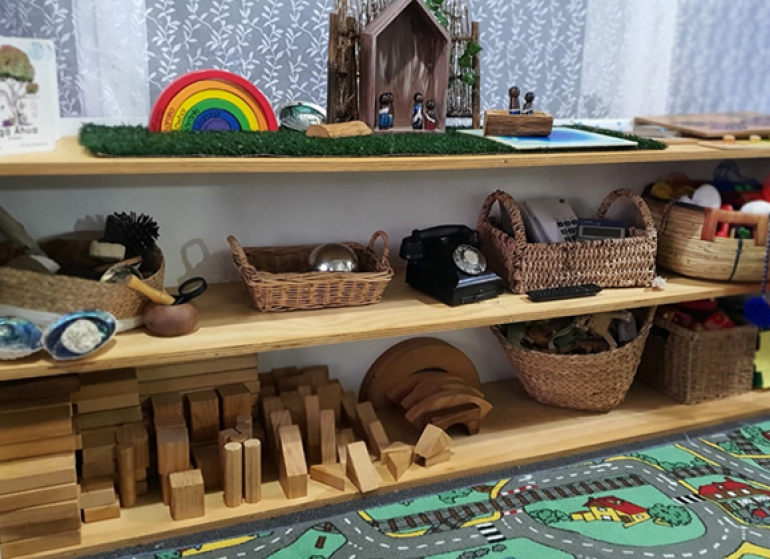News And Events

Ideas for Interesting Spaces
28 August 2023When setting up learning spaces, it is important to think about these from a child’s point of view. The easiest way to get an insight into a child’s sense of scale is simply to sit or lie on the floor. How does the room look to you?
We might ask ourselves questions such as:
- Can I reach interesting and safe resources for discovery and play?
- Can I roll/crawl/walk and move around the space safely? Is there sufficient room for me to do this?
- Can I choose what resources I want to explore and play with?
- Do I feel comfortable in this space – is the floor soft and clean?
- Is the space warm, light and inviting?
Here are just a few ideas to make spaces interesting for the different age groups of preschool Tamariki to explore:
Infants: dangling objects using natural resources and/or objects with a range of colours, soft and sensory floor coverings, push-pull toys, gentle music, fabric books, reflective surfaces/mirrors secured at floor level.
Toddlers: Book space that includes favourite picture books and posters, family play area, music instruments, wooden puzzles, small water play station, treasure baskets.
Young Children: Obstacle course to challenge physical skills, a wider range of books, games and puzzles for young children to make choices, protected areas for block play that is not interrupted, puppets for storytelling, range of collage materials.
The learning outcomes from Te Whāriki for engaging play and learning spaces include:
- Playing, imagining, inventing and experimenting | te whakaaro me te tūhurahura i te pūtaiao
- Moving confidently and challenging themselves physically | te wero ā-tinana
- Using a range of strategies for reasoning and problem solving | te hīraurau hopanga
- Making sense of their worlds by generating and refining working theories | te rangahau me te mātauranga


